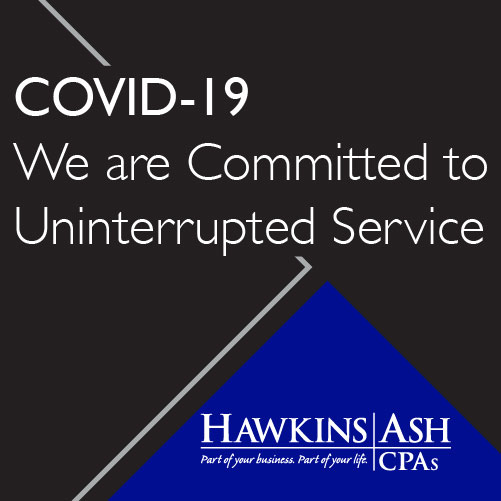AICPA National Credit Union Convention
Notes
November 2-4, 2015
Session 1 – NCUA Keynote Address
- Key challenges for Credit Unions (CUs) include cyber threats, interest rate risk, regulatory burden and a changing industry profile.
- Examiners need to be able to adapt to specialization. Before, new examiners could be sent to enforce a bright line test. Now examiners need more training in order to “regulate” flexible regulations.
- FFIEC Cyber Assessment Tool can be used to help identify risks and determine cybersecurity preparedness.
- Regulatory relief initiatives
- Add Derivatives authority
- Remove the Fixed Assets limit
- Add Supplemental Capital
- Expand Fields of Membership
- Ease Member Business Lending
- Multi-tiered regulations
- Decreasing number of CUs results in an increasing concentration of assets, products and services as well as increased sophistication and complexity of services and the risks they present.
- Total assets held in CUs is $1.16 trillion with CUs in excess of $250M comprising of 81% of that total. CUs with less than $50M in assets account for 64% of total number of CUs but only 5% of total assets.
- The number of CUs decreased by 36% between 2002 and 2015 with CUs under $50M in assets seeing a decrease of 50% with CUs between $50-250M, $250-$1B, and greater than $1B all increasing in number.
- Increased concentration in real estate loans means increased interest rate risk sensitivity and slower increases in yields. In 1992, real estate loans comprised of 34% of CU loans. In 2015, real estate loans now comprise of 48% of CU loans.
- A new examination system and call report system are under development in order to provide better offsite risk monitoring and less onsite exam and supervision time.
Session 2 & 3 – Accounting/FASB Update
- Recently effective or issued standards
- Push down accounting (ASU 2014-17) – Entity has option to push down accounting. Has limited applicability.
- Goodwill amortization (ASU 2014-02) – From the Private Company Council and is only available to institutions not considered “public.” Allows an entity to amortize goodwill over 10 years. Also changes when an entity has to test for impairment and at what level.
- Intangibles (ASU 2014-18) – From the Private Company Council and is only available to institutions not considered “public.” Can elect to not recognize non-compete agreements or any other customer related intangibles unless they are capable of being sold or licensed independently. Core deposit intangibles fall under this ASU.
- Measurement period adjustments (ASU 2015-16) – Relates to the measurement period in a business combination.
- Transfers to ORE (ASU 2014-04) – Limited to consumer mortgage loans collateralized by residential real estate. Provides timing for when to record an OREO.
- FHA Guarantees (ASU 2014-14) – Addresses how creditors classify government guaranteed mortgage loans (including FHA and VA).
- Repurchase agreements (ASU 2014-11) – Requires repo-to-maturity agreements and repurchase financings to be accounted for as secured borrowings.
- Revenue from contracts with customers (ASU 2014-09) – Substantially converged with IFRS on major provisions. One of the main changes is a focus on the contract rather than on transactions of a certain type or by certain industry. Areas it may affect financial institutions are loyalty point programs, asset management fees, credit card interchange fees and OREO sales guidance. Effective for annual reporting periods beginning after 12/15/18 for non-public companies (12/15/17 for public companies).
- Going concern (ASU 2014-15) – Defines substantial doubt and indicates look forward period is 12 months from the issuance date.
- Simplification initiative items that have been addressed or are to be addressed:
- Eliminate the concept of extraordinary items (ASU 2015-01)
- Simplify the presentation of debt issuance costs (ASU 2015-03)
- Simplify equity method of accounting (comment period ended in August)
- Reviewing disclosures related to defined benefit plans, fair value measurement, income taxes, and inventory. Looking to eliminate fair value disclosures or at least simplify them.
- Exposure draft on assessing materiality in disclosures.
- Final standard based on the proposed ASU “Accounting for Financial Instruments and Revisions to the Accounting for Derivative Instruments and Hedging Activities – Financial Instruments (Topic 825) and Derivatives and Hedging (Topic 815) are expected in the 4th quarter of 2015.
- FASB proposed ASU “Financial Instruments: Credit Losses” (Subtopic 825-15) was issued in 2012. Final regulations have not been issued.
- Overview of the CECL (Current Expected Credit Loss): Recognize an allowance for expected credit losses on financial assets. More specifically, an estimate of all contractual cash flows not expected to be collected from a recognized financial asset or commitment to extend credit. It is based on relevant information about past events, future conditions, and reasonable and supportable forecasts that affect the expected collectability of the financial assets’ remaining contractual cash flows. Includes qualitative and quantitative factors specific to borrowers and the economic environment in which the entity operates. The assessment includes an evaluation of the forecasted direction of the economic cycle. This model departs from the current incurred loss model which effectively eliminates the probable loss threshold as well as removes the prohibition on recording day one losses. All speakers indicated the key to being able to set up your allowance to fit your financial institution will be data. In particular, having the necessary data (such as by credit score) will be necessary to support the model. Making sure you have this data available now will make setting up the model that much easier.
- Main changes required under the CECL model:
- Need to develop estimates that are more forward-looking than previously.
- Need to re-evaluate the current primary drivers of loss. Likely multiple drivers exist for each portfolio.
- Changes in the data needed to implement the CECL Model.
- CECL model will apply to hold-to-maturity securities. AFS retains other than temporary concept.
- FASB has not issued final standards (expected 1st quarter 2016). Effective date is to be determined that it is not expected to be effective prior to 2018.
- FASB is also reviewing standards related to accounting for leases. Potential could be for all leases longer than 12 months to be recorded as an asset and liability on the balance sheet. Currently, only capital leases are included on the balance sheet.
Session 4 – The State of Electronic Fraud and Data Security in the Financial Institutions Industry
- Current trends and case studies include:
- Plain old money laundering
- Point of sale system attacks
- Business email compromise
- Trade-based money laundering
- Virtual currency
- Target Windows XP point of sale systems as Windows has stopped updating viruses.
Session 5 – NCUA Regulatory Update
- NCUA’s expectations for CU’s:
- Operate in compliance with all applicable laws and regulations.
- Maintain safe and sound practices and condition.
- NCUA’s supervisory focus
- Interest rate risk
- Cyber-security
- BSA – Money service businesses
- TILA – RESPA (8/1/15)
- Flood Act (10/1/15)
- Internal controls – small CU exam
- New products – high growth areas – changes in strategy
- IRR conclusions:
- Need comprehensive update to supervisory guidance
- Need to convey clear expectations and ensure examiners are trained and consistent in their application of standards
- NMS assumptions, over-simplified modeling, lack of sensitivity analysis are common weaknesses
- Board and senior management need to embrace as integral aspect of risk management, not compliance exercise
- Money service business risk factors
- Lack ongoing customer relationships
- Minimal or no identification requirements
- Limited recordkeeping
- Frequent or high dollar amount of currency transactions
- Cashes any third-party checks or for commercial businesses
- Currency dealer or money transmitter for cross-border transactions, especially to certain countries
- New business without an established operating history
- Located in an area designated as a High Intensity Financial Crime Area (HIFCA) or a High Intensity Drug Trafficking Area (HIDTA)
- Initiatives in Process
- Specialists
- Improved examiner training
- Update of Examiner’s Guide
- AIRES update
Session 7 – The Current Expected Credit Loss (CECL) Implementation
- What to do in 2016 to prepare for CECL
- Create a team of accounting, lending, treasury, IT, credit risk, and internal audit
- Gain an understanding of your current loan data and loan processes/systems
- Gain an understanding of your current charge-off and recovery data as well as systems and processes
- Gain an understanding of system changes, mergers/acquisitions
- Document data needs for current systems and processes – things you need to start doing now
- Review PCI and TDRs for data elements and changes with CECL
- Document data needs for historical loan data as well as charge-off recoveries (loan level)
- Collect and store as much historical loan data at the loan level as possible – yes, I mean month by month loan and charge-off/recovery data
- Start changes to current loan policies and processes based on data issues
- Determine how you are going to calculate CECL
- Will need to use qualitative and quantitative factors – both internal and external. Examples might include FICO scores and unemployment rates.
- Need to determine what pools will look like. Example might be first mortgages with an average life of 10 years.
Session 11 – Supervisory Committee Audits – Under Construction
- Problems with the current Supervisory Committee Audit Guide
- Fixed assets?
- Income and expenses?
- Payroll?
- BOD minutes are minimal
- Other assets and liabilities – does not address other than suspense accounts.
- Allowance for loan losses – in compliance with GAAP?; materiality correct?
- Examiner “wish list” for updated guide
- Ensure accrued interest on loans is correct (excludes loans over 90 days delinquent)
- Review reconcilements for ATMs
- Retain confirmations of bank and investment statements for review
- Assess the adequacy of the ALLL account, not just verify that calculations for the ALLL assessment are mathematically correct.
- Other items to potentially include
- Assets acquired in liquidation testing
- Testing of key income and expense areas
- Information systems testing
- Other assets/liabilities section expanded
- Review of controls over wire transfers expanded
- Allowance for loan losses area expanded without giving an opinion
Session 13 – AICPA’s Enhancing Audit Quality Initiative
- Pre-licensure – Update the CPA exam along with overall changes to accounting education.
- Standards and Ethics – Quality control standards implementation; ethics codification
- CPA Learning and Support – Competency models for audits; certificate programs
- Peer Review – Focus on greater risk industries or area; termination from peer review after repeat quality issues
- Practice Monitoring of the Future – Near real-time, ongoing monitoring of firm quality checks
- Enforcement – Aggressive investigation of all referrals of deficiencies; enhanced coordination with state boards
Session 15 – Member Business Lending and the Allowance for Loan Losses
- Cash flow analysis is the most important component when underwriting a MBL.
- Recommended structure of rating system has at least a minimum of four categories: Pass, Substandard, Doubtful, and Loss. Additional categories could include Watch List and Special Mention.
- Pass ratings should be broken down further into at least three categories: Exceptional, Very Good or Good, and Acceptable or Standard.
Session 17 – Panel Discussion on CECL
- What is the life cycle? Pools will determine the period to be used. Make sure you have data for this period.
- Mark to market eliminates the need to use CECL.
- Expect two years of forecasting to be the average in your model, at which point you would revert to historical.
- Suggest obtaining FICO scores on an annual basis.
Session 20 – Dirty Dozen Accounting and Audit Issues
- Allowance for loan losses – balance too low or too high; qualitative and environmental factors are not considered, not documented, or inappropriately used
- Bankruptcy issues – computer system not updated to agree to court ordered approved payment plans; court ordered charge-offs not being recorded timely; delinquent accrued interest not being charged-off when bankruptcy approved (on-time payments received when the member continues to make payments could result in interest that was 90 days delinquent at the time of bankruptcy being included in the total.
- Mergers/acquisitions – complex accounting rules
- Life insurance policies – assets not recorded at correct value; loan to participant classified as CSV; imputed interest on loan to employee not considered.
- Deferred compensation arrangements – CFO not often familiar with the arrangements; amendments to arrangement not communicated to the CFO; investments need to be in compliance with regulations.
- Information technology issues – weak password security; weak back-up procedures; weak destruction practices
- 401(k) plan issues
- Business loan issues – MBL departments often work in isolation without adequate oversight; MBL policies do not comply with 723.6 of NCUA regulations; risk rating not accurate or consistent with MBL and ALLL polices
- Internal control issues – fee reversals not monitored for appropriateness; wire transfer settings not monitored for appropriateness; accounting staff has access to g/l and member accounts; deceased/dormant accounts not monitored for appropriateness; controls over money service businesses not monitored for appropriateness.
- Form 1099-C (Cancellation of Debt) – often not filed which could subject to the CU to IRS fines and penalties.
- General Ledger Reconciliations – reconciliations reviewed by the individual that prepared them; not reconciling all g/l accounts; not supported with proper documentation.
- Random issues
- Proper accounting for sold loan participations (qualify for sales treatment)
- Indirect loan arrangements – item agrees to invoice
- Accounting for force placed collateral protection insurance – force placed insurance should result in an increase to the loan payment
- Guest travel not accounted for correctly
Session 21 – Risk-Based Capital Update
- Other banking agencies updated their capital standard in July 2013. NCUA has a statutory requirement for CU’s capital standards to be comparable to those for banks.
- Reasons for the current update to RBC.
- Address recommendations and concerns raised by the US Government Accountability Office and the NCUA’s Inspector General
- Address lessons learned from CU failures during the great recession
- Apply a risk-based capital measure that is more consistent with measures used by other financial institutions
- Goodwill phase-out in the calculation. Better to amortize goodwill over 10 years so ready for phase-out?
- NCUA has a Risk-Based Capital Ratio Estimator available.
- Looking to have the Call Report updated by 2018.
- RBC applies to complex CUs.
- Real estate loans above limits get a higher risk rating.
Detailed changes to the final RBC rule can be found at www.ncua.gov under the Resource Center
Session 24 – Economic Outlook
- Fannie Mae provides a monthly economic and housing outlook – link.
- Fannie Mae provides a periodic consumer research & analysis – link.
Please contact us for further information.





